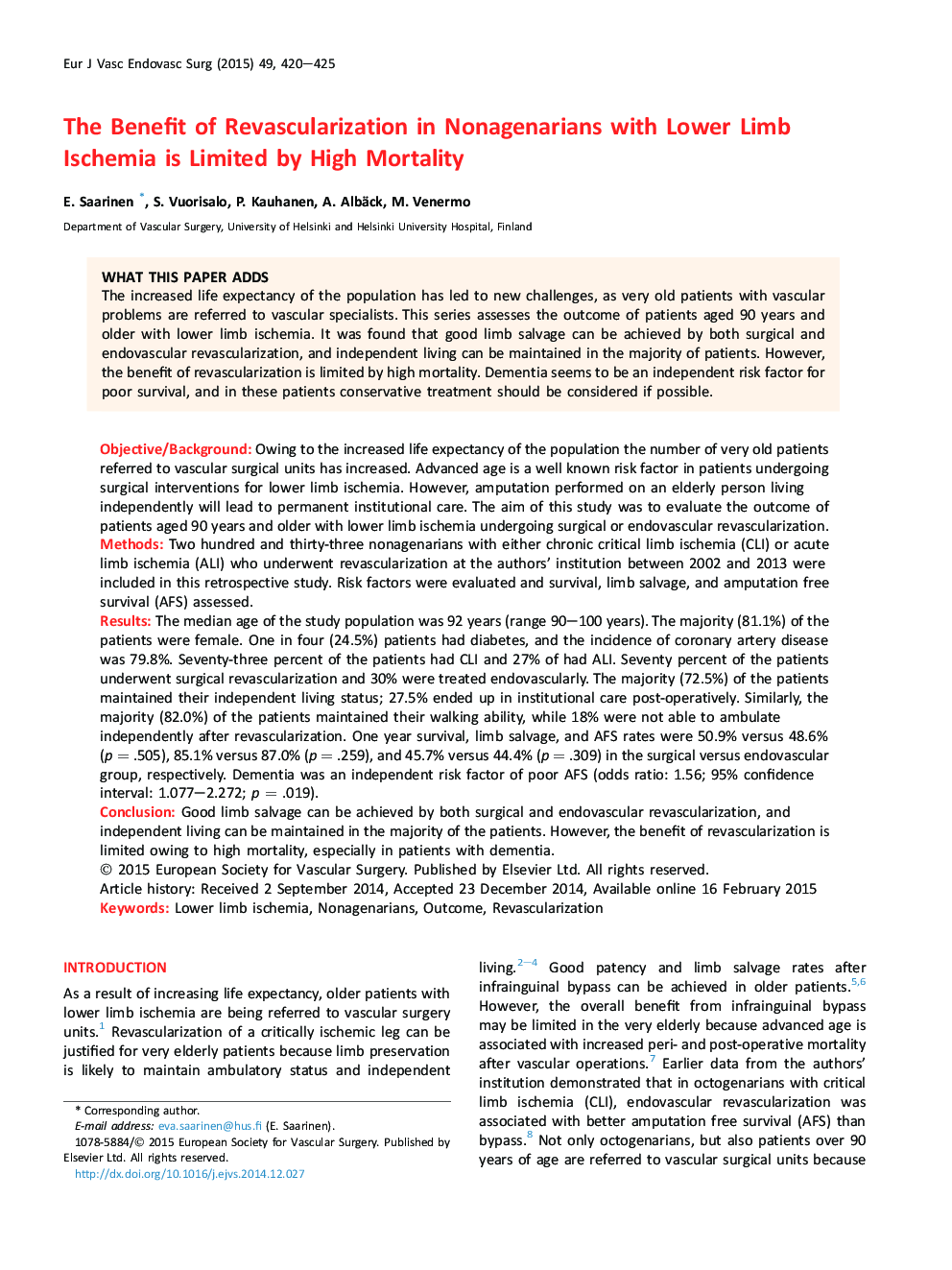| کد مقاله | کد نشریه | سال انتشار | مقاله انگلیسی | نسخه تمام متن |
|---|---|---|---|---|
| 2912063 | 1575443 | 2015 | 6 صفحه PDF | دانلود رایگان |
Objective/BackgroundOwing to the increased life expectancy of the population the number of very old patients referred to vascular surgical units has increased. Advanced age is a well known risk factor in patients undergoing surgical interventions for lower limb ischemia. However, amputation performed on an elderly person living independently will lead to permanent institutional care. The aim of this study was to evaluate the outcome of patients aged 90 years and older with lower limb ischemia undergoing surgical or endovascular revascularization.MethodsTwo hundred and thirty-three nonagenarians with either chronic critical limb ischemia (CLI) or acute limb ischemia (ALI) who underwent revascularization at the authors' institution between 2002 and 2013 were included in this retrospective study. Risk factors were evaluated and survival, limb salvage, and amputation free survival (AFS) assessed.ResultsThe median age of the study population was 92 years (range 90–100 years). The majority (81.1%) of the patients were female. One in four (24.5%) patients had diabetes, and the incidence of coronary artery disease was 79.8%. Seventy-three percent of the patients had CLI and 27% of had ALI. Seventy percent of the patients underwent surgical revascularization and 30% were treated endovascularly. The majority (72.5%) of the patients maintained their independent living status; 27.5% ended up in institutional care post-operatively. Similarly, the majority (82.0%) of the patients maintained their walking ability, while 18% were not able to ambulate independently after revascularization. One year survival, limb salvage, and AFS rates were 50.9% versus 48.6% (p = .505), 85.1% versus 87.0% (p = .259), and 45.7% versus 44.4% (p = .309) in the surgical versus endovascular group, respectively. Dementia was an independent risk factor of poor AFS (odds ratio: 1.56; 95% confidence interval: 1.077–2.272; p = .019).ConclusionGood limb salvage can be achieved by both surgical and endovascular revascularization, and independent living can be maintained in the majority of the patients. However, the benefit of revascularization is limited owing to high mortality, especially in patients with dementia.
Journal: European Journal of Vascular and Endovascular Surgery - Volume 49, Issue 4, April 2015, Pages 420–425
